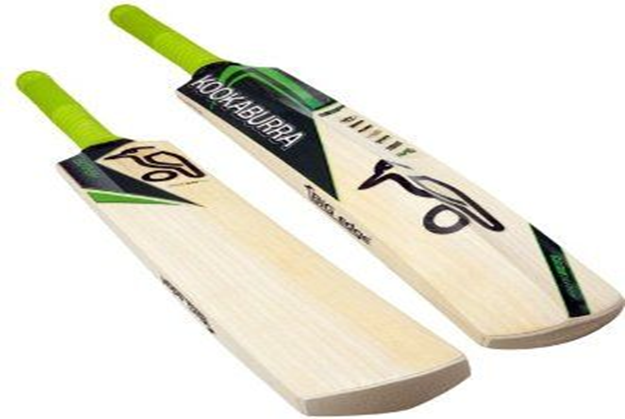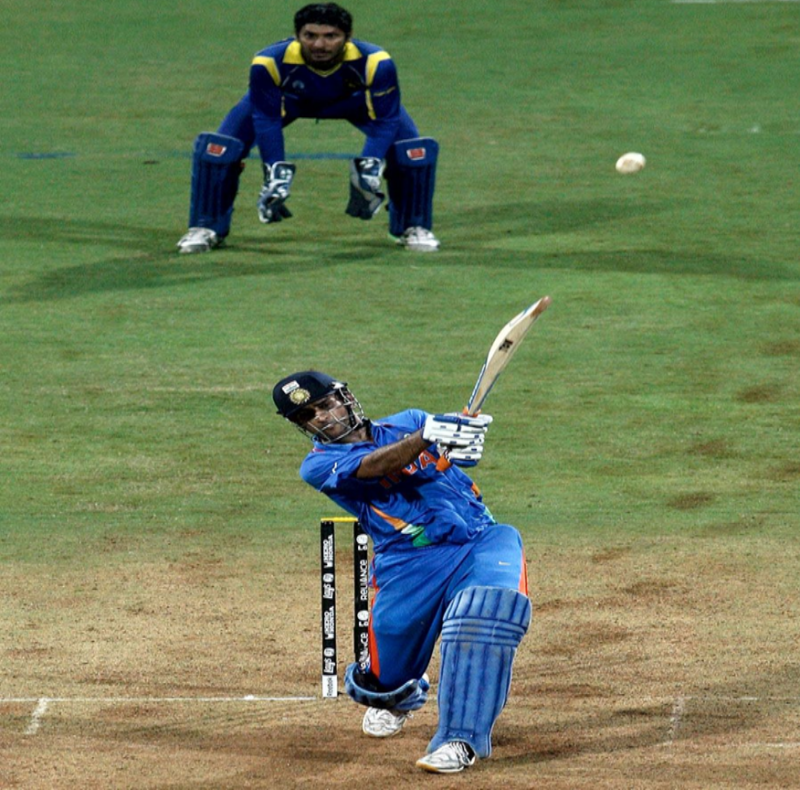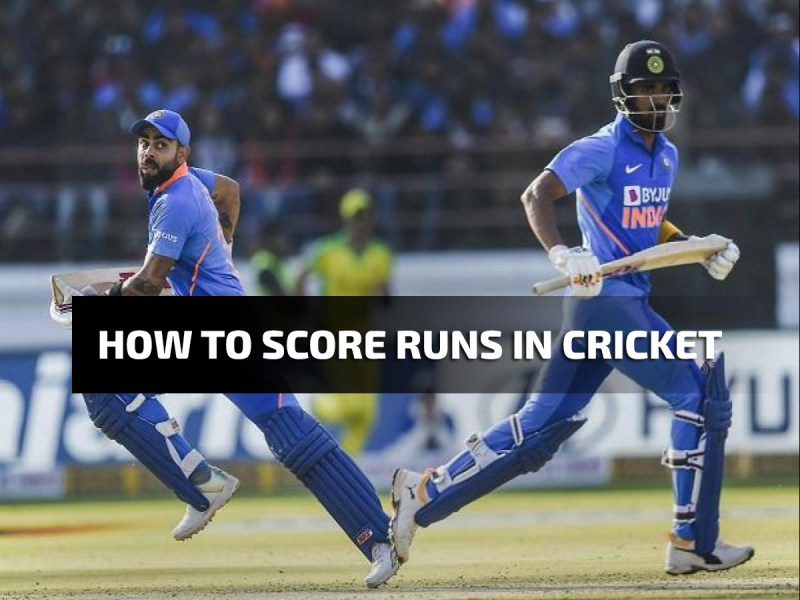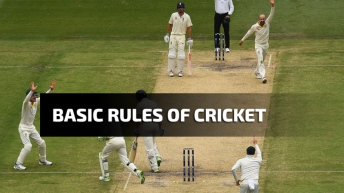Winning and losing is the most important part of a game. To decide which side is winning, all kinds of sports use a point or score system. This scoring system can be seen in the form of a home run in baseball or the form of goals in a football match—it is everywhere. You can pick any kind of sport right now and it would have a point system.
Just like all the other sports, cricket also has a point system. In cricket, points are most commonly referred to as "runs." It may sound tough, but scoring runs in cricket is very easy. This is because there are several ways a team can score runs in a cricket match. This can be understood by the fact that a team usually scores about 160 to 200 runs in a Twenty20 cricket match, which is one of the shortest formats of the sport.
![Bat is used to score runs in cricket]()
If the fielders are taking more time to retrieve the ball, the batsmen may run between the wickets more than once and score “twos” and even “threes.” In theory, many runs can be made by running like this, but the fielders usually recover the ball quickly in reality as there are nine of them after the ball.
![Batter trying to hit the boundary]()
Extras can be divided into five types:
According to the no-ball rule in cricket, the batting team gets one run when a no-ball is bowled. In some cases, it gets two runs or a free hit. Whichever may be the case, the no-ball is not counted as a regular ball of an over. As in the case of a wide ball, the runs awarded for a no-ball are not credited to the batsman.
![Scores can be scored without hitting with the bat through wide, no-ball, bye, and leg bye]()
Just like all the other sports, cricket also has a point system. In cricket, points are most commonly referred to as "runs." It may sound tough, but scoring runs in cricket is very easy. This is because there are several ways a team can score runs in a cricket match. This can be understood by the fact that a team usually scores about 160 to 200 runs in a Twenty20 cricket match, which is one of the shortest formats of the sport.

Figure: Bat is used to score runs in cricket (Picture Credit: Pinterest)
Scoring a Single
A batsman scores one run when he hits the ball, either with the bat or with the gloved hand that is holding the bat, directing it away from the fielders so that both the players holding a bat (the striker and the non-striker) can run the length of the pitch. If they cross each other and arrive safely at the opposite ends of the pitch before the fielders can catch the ball and hit the wicket, the striker has successfully scored one run, which is also known as a "single."If the fielders are taking more time to retrieve the ball, the batsmen may run between the wickets more than once and score “twos” and even “threes.” In theory, many runs can be made by running like this, but the fielders usually recover the ball quickly in reality as there are nine of them after the ball.
Scoring a Boundary
Running between the wickets is not the only way a batsman can make runs. If the batsman hits the ball hard enough to make it cross the marked boundary on the field, the batsman makes either four or six runs. If the ball had touched the ground or a fielder while it was on its way to cross the boundary, the batsman gets four runs in this case. However, if the batsman successfully hits the ball over the boundary without hitting the ground even once, the batsman and his team will get six runs. If both batsmen are running when the ball reaches the boundary, they may stop and their team will be awarded whichever runs are greater i.e. their boundary runs or the runs the batsmen scored by running.
Figure: Batter trying to hit the boundary (Picture credit: Pinterest)
Extras
The abovementioned methods of scoring runs in cricket are the most common ones in the sport and can be seen very frequently during a match. However, there are some other methods of scoring runs in cricket that can get the batting side some additional runs. These methods are collectively referred to as extras. Extras are the runs scored by methods other than hitting the ball with the bat. These runs are awarded to the batting team, but they are not credited to any individual batsman as they are mostly associated with untidy bowling rather than good batting.Extras can be divided into five types:
- Wide
- No-ball
- Bye
- Leg bye
- Penalty run.
Wide
You must have heard the term "wide ball" a lot during a cricket match. You must have seen the batting team getting happy whenever the umpire announces that a wide ball has been bowled. So what does a wide ball mean in cricket? A wide ball is a result when a bowler bowls in bad line or when he bowls the ball too far away from the batsman to strike it. Such delivery is considered as wide if no part of the batsman's body or equipment touches the ball. A wide is the most common type of extra. Whenever a wide is bowled, the batting side is awarded a run; however, this run is not credited to the batsman at the striker's end. It is added to the bowler's score. Also, a wide ball is not counted as one of the six regular balls of an over.No-ball
The no-ball rule in cricket is a bit complex as there can be many reasons for an umpire to call a no-ball. A no-ball is called whenever the bowler or fielder commits an illegal action during bowling. The most common cause for a no-ball is a bowler overstepping the popping crease with his front foot. It can also be called when the bowler’s back foot touches or lands outside the return crease. Other reasons include the bowler bowling a full toss above the waist, chucking the ball or bowling an unfair short-pitched ball.According to the no-ball rule in cricket, the batting team gets one run when a no-ball is bowled. In some cases, it gets two runs or a free hit. Whichever may be the case, the no-ball is not counted as a regular ball of an over. As in the case of a wide ball, the runs awarded for a no-ball are not credited to the batsman.
Bye
If the delivered ball is not hit by the batter’s bat and hasn’t touched any part of his body or even the equipment, the batsman can get runs by running between the wickets. If the ball crosses the boundary while the batters were running between the wickets, four byes are awarded to the team (not the batsman). You can score byes on both no-balls and legitimate deliveries.
Scores can be scored without hitting with the bat through wide, no-ball, bye, and leg bye (Picture credit: Pinterest)






















